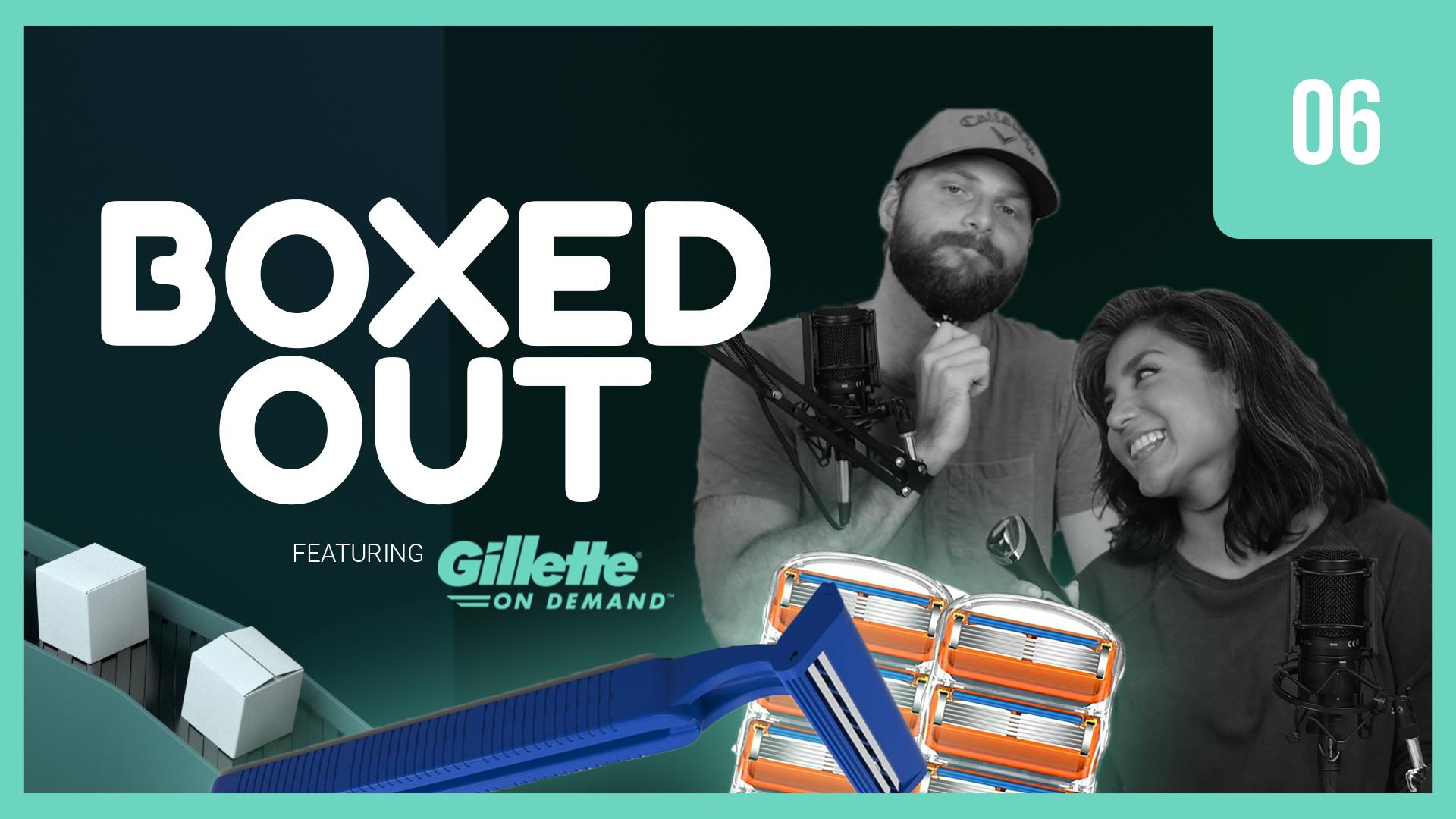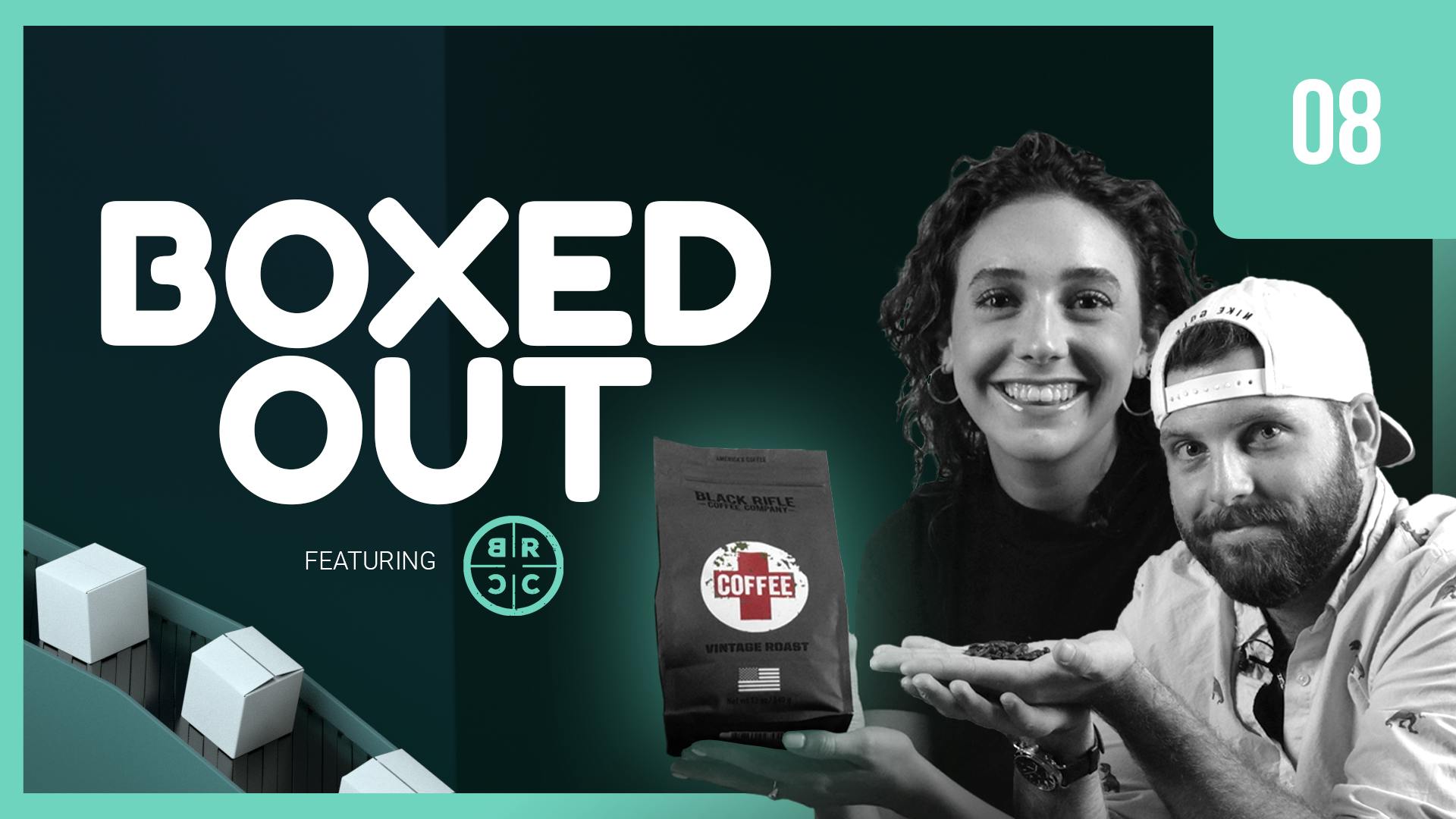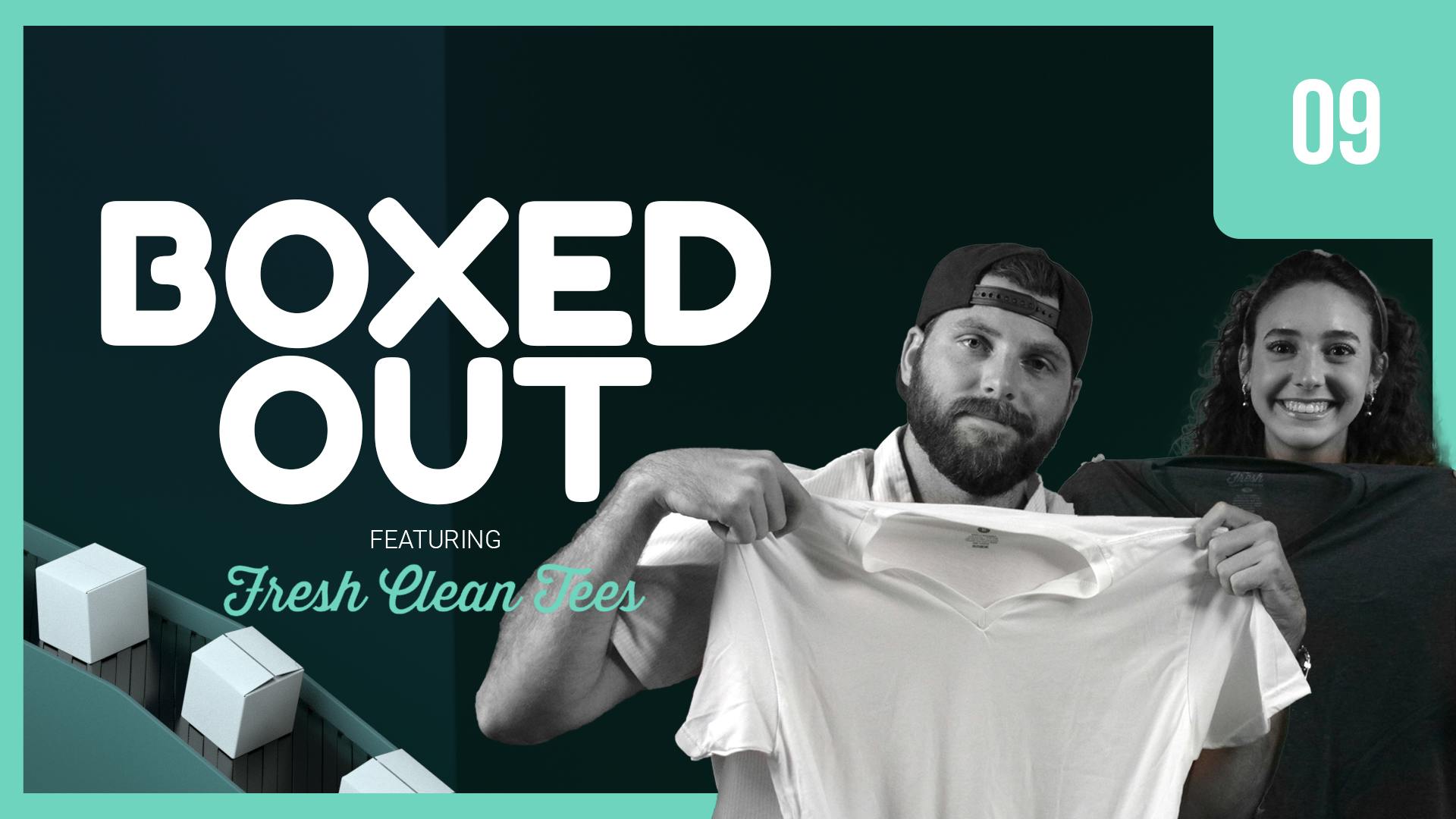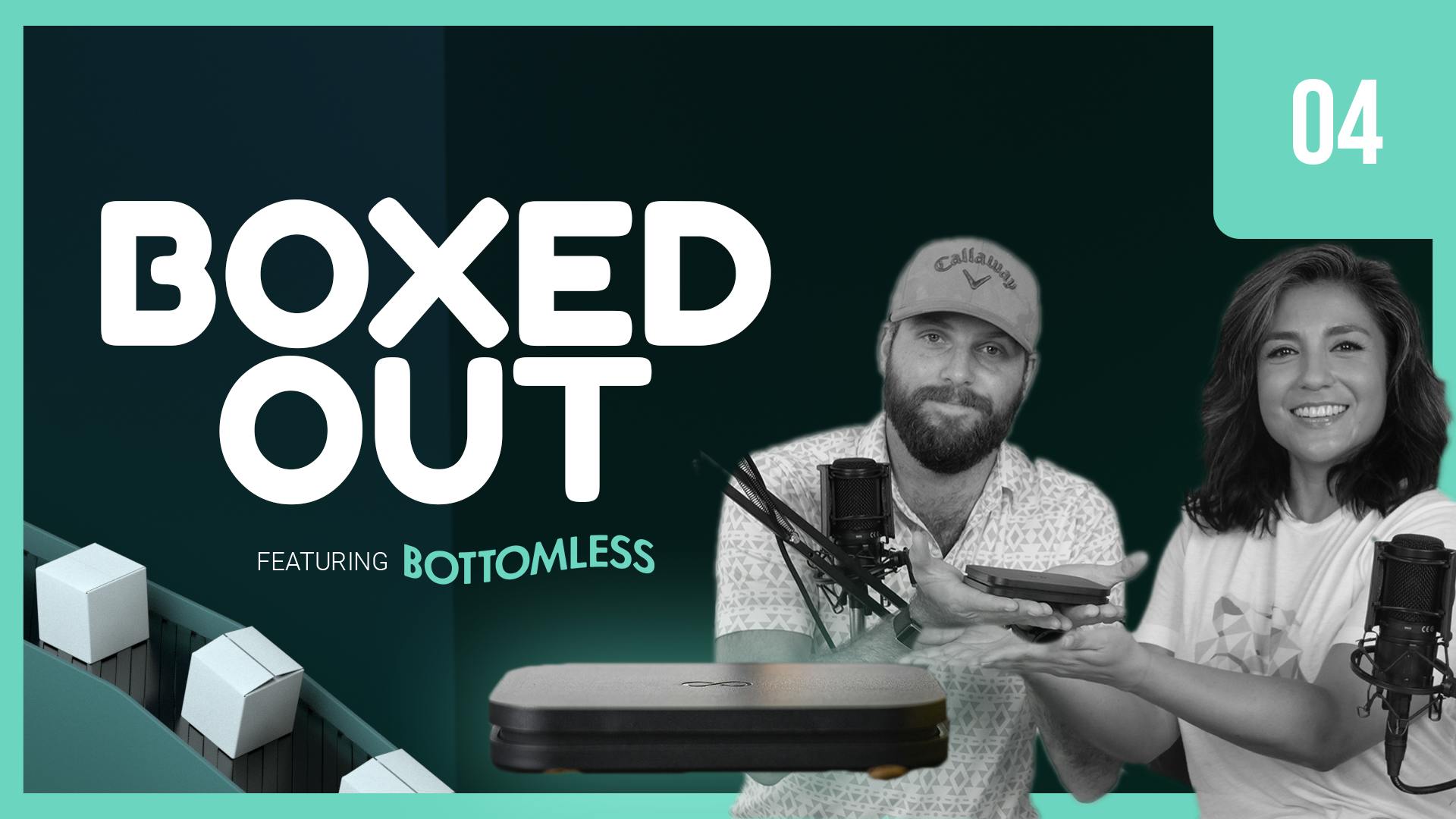
MeUndies: Brief or long retention?
This episode might reference ProfitWell and ProfitWell Recur, which following the acquisition by Paddle is now Paddle Studios. Some information may be out of date.
Please message us at studios@paddle.com if you have any questions or comments!
Today we're talking about MeUndies, a company that's shaking up the undergarment industry. We're going to learn how MeUndies utilizes unique patterns and a phenomenal shopping experience and then we're going to jump into what they're doing great—and not so great—with their subscription retention strategy, wrapping this all up into a nice case study for improvements for your own brand.
MeUndies, a pioneer of online underwear subscription, has grown into a multi-million dollar company by understanding who their core customer is and attaching themselves to a cause. MeUndies now has a presence in 120 countries—can their retention keep up?
Key takeaways:
- Innovation and group programs increase retentionMeUndies’ Match Me program and periodic product innovation is a great way to keep customers engaged. And it doesn’t have to be complicated. Releasing editions of your product, even if they’re only slightly different, can do extremely well and keep people coming back.You should also be thinking about implementing programs that get a group of people to buy into your product together. Think through who else the customer is telling about your product, or even using the product with. Then create a program that pushes that forward.
- Consider a donation feature
MeUndies prides themselves on their sustainability and eco-friendly approach, so why not feature a donation in their onboarding flow? It’s good for business. And customers who have charitable donations bundled with their ecommerce subscriptions tend to retain at a 10%-20% higher rate than those who don't. - Optimize and simplify offboarding process
Be sure to include salvage offers in your offboarding process. Companies with proper offboarding and salvage offers tend to save 15-30% more customers who go through a cancellation flow. Direct customers to different salvage offers after a brief one- to two-question survey when they try to cancel.
Additionally, eliminate any unnecessary friction in your cancellation process. While you want to try and keep your customers from leaving, you don't want to make the experience aggravating and completely remove any possibility of them coming back.
It’s believed that the first form of undergarment worn by humans was a loincloth that the ancient Egyptians wore 7000 years ago. In warmer climates, the loincloth was the only clothing worn. Up until the 19th century, undies in Europe and America served two primary purposes: to protect the costly outer garments from the body's dirt and to provide an extra layer of insulation under space suits and dry suits. Today, undies are worn for various other reasons, including additional warmth, comfort, support of the nether regions, and to shape the body.
Underwear sold via subscription may, at first, sound weird and unreal. However, MeUndies is one company that has undoubtedly shaken up the undergarment industry with its online undergarment subscription model. MeUndies' goal is to reinvent the underwear shopping experience with top-notch products, unmatched customer experience and services that enable everyone to live equally, authentically, and without apology, regardless of gender, race, sexual orientation, and more.
Jonathan Shokrian founded MeUndies in 2011 as a pioneer of online underwear subscription. It has since expanded into other product offerings such as bralettes, socks, loungewear, and BuddyBandsTM. Today, MeUndies is a dominant global lifestyle brand with a formidable presence in 50 US states and 120 countries.
MeUndies' success
The global success that MeUndies has seen can be attributed to two main components: understanding who their core customer is, and attaching themselves to a cause.
Studies reveal that three-quarters of millennials—their core customer—prefer spending their money on experiences rather than material goods. MeUndies very clearly understands this and is proactive about fostering that connection. They’re very outspoken on issues that help them connect to a younger audience better, including body positivity and gender identity.
They also leverage their membership model to add exclusivity and make their brand more aspirational and experimental, two things that also hit home with the millennial shopper
Social causes are another important influencer for millennials. And MeUndies has a cause marketing platform, MeUndies Gives, launched to fight conformity and promote acceptance and change. They also partner with organizations to support certain causes and open up conversations around them. All of which aligns with their customers.
MeUndies offers a long list of exciting products for both men and women, coming in a range of sizes, styles, and colors. These include undies, socks, swimwear, bralettes, accessories, packs, gift cards, and more.
When you visit their homepage for the first time, you get an invite to "find your first pair" of underwear. MeUndies then surveys you on your preferences and helps you find the right product. You have the option for one-time purchases or to purchase a membership.
MeUndies leveraged a top-notch subscription eCommerce model to transform a boring traditional retail store into a giant online eCommerce business boasting over 15 million pairs of undergarments sold in several destinations across the planet.
The brand is now worth $32 million and was recently recognized on the Inc. 5000 list as one of the Fastest-Growing Retail Companies in the US. MeUndies has since grown 1,583% in the last three years to hit an estimated annual revenue of $60M. Needless to say, MeUndies' future definitely looks bright.
Retention Review
Not everything's amazing about MeUndies’ strategy though—but there’s still a lot to learn from them. They do a great job at really leaning hard into their customer personas with a wide variety. That being said, we need to remember: retention is key and an area where most brands mess up
Why is retention important?
You spend half of your budget and time acquiring customers, but to be successful, you need to keep them. The beauty of the subscription model is that the relationship with the customer is baked directly into how you make money. If that customer is happy, they'll keep buying from you in the long term. If they're upset or not seeing the value, they'll cancel—quickly.
Plus, money talks here. Subscription ecommerce companies using the tactics we're going to talk about have 2x the customer lifetime value (LTV), 2x the average order value, and 3x higher growth rates, because they're not worried about plugging a leaky retention bucket.
To highlight the importance here, let's look through MeUndies' retention strategy and break down what they're doing well, and not so well, so you can learn for your own DTC business.
Retention has three parts:
- Active churn, which are customers who are actively choosing to cancel your product.
- Expansion revenue, which are your existing customers that buy more product.
- Delinquent (or involuntary) churn, which are customers who's credit card or payment has failed, which sadly is one of the largest single buckets of where you're losing money.
Active Churn
When we look at MeUndies' active churn, there are so many reasons why a customer may cancel—some you can control, others you can't. We want to make sure MeUndies is not only setting up their customers for long-term retention in the initial purchasing process, but that they're also collecting information on why someone's cancelling, if they so happen to, in order to get a clean cycle of retention improvement.
MeUndies did okay when it comes to their active cancellations. The first thing I love about their onboarding process is the Match Me program. With the Match Me program, customers are given the option to receive matching items that they can share with loved ones.
Anytime you can get the family involved, it's a win. We’ve seen this heavily in the vitamin and other food communities, but it’s not done as much as it should in the apparel market. A program like the Match Me program is a great way to engage their customers further. Couples are also less likely to cancel because the membership is now something they share and look forward to together.
Other brands should create shared experiences around their products where they can, even if they have to force it. It causes people to think twice about cancelling and, ultimately, leads to higher average order value.
Their offboarding flow, however, needs a lot of work. It’s well designed from a UI perspective, but it’s extremely clunky and doesn’t really present me with any salvage offers to help me stick around. There is a pause option here, but that’s about it.
Remember, the best brands out there have a one- to two-question survey to help them understand why someone is cancelling and then based on those answers, push people into different offers. We've found that those companies that properly offer salvage offers tend to save 15-30% more customers who go through a cancellation flow. This is based on a study we completed on just over 1,000 DTC subscription companies.
Something else they’re doing that's adding friction—and they may not realize they’re doing—is that if I have multiple subscriptions, I have to cancel each one separately and even type the word “confirm” for every single one. Cancelling everything individually is annoying enough, but typing “confirm” gets a little condescending. Keep in mind that a lot of people who churn would come back, but if you create an environment where they’re leaving aggravated, then they likely won’t.
One suggestion I actually have for them, that’s unrelated, is they should really consider a donation feature. MeUndies prides themselves on their sustainability and eco-friendly approach, so why not feature a donation in their onboarding flow?
It's a good idea and not just altruistic either, it’s good for business. Customers who have charitable donations bundled with their ecommerce subscriptions tend to retain at a 10%-20% higher rate than those who don't based on a study we did on over 30,000 DTC subscription customers. If you have a social component, add it to the onboarding flow. Even if you don’t, if there’s a social cause that makes sense for your brand, why not add it? Customers love social causes, so they could be making some additional gains here.
Expansion Revenue
Expansion revenue is crucial, because your existing customers are more than willing to buy 3x more from you—you just have to make sure to ask. Plus, those customers who have at least one add-on or additional purchase tend to have 18-54% higher lifetime value, meaning they're paying you more over the life of the subscription, but they're also sticking around longer, because they're more ingrained within your product.
MeUndies is actually implementing some great tactics here. They’ve absolutely nailed the notion of having enough product variety in terms of actual garment options, such as underwear, PJs, masks, etc., but then also having an intense number of options of patterns and designs. They show you these throughout the checkout process and then market them to you once you’re a customer.
It’s really fun and it's great for business. The one thing to take away here is people like variety, especially in consumable or semi-consumable goods, but the importance of variety can’t be underestimated here. When you’re dealing with a commodity item like socks and underwear the design differentiator is huge in influencing retention and expansion revenue. I’m a sucker for new designs, and if I’m constantly being offered new and exciting designs, I’m a lot more likely to stick around with MeUndies for the long term.
An area I think they should rethink is their credit system for referrals. We’ve found that these credit or reward systems work well or fail based on the positioning, and most of the time companies should reposition these as cash, as in “MeUndies Cash.” Something like cash feels concrete to a user, whereas points feel made up.
They’re both technically made up, but cash feels like something I’d spend, because I spend cash on many different things. MeUndies should expand this to not just referrals, but also to cash based on purchases. They can set up the economy to work really well within their margins, so as you reach certain levels you have enough to buy a pair of socks or that pair of underwear with a cool design.
You want people continually thinking about spending money with you, even if you have to give them some as credit based on their behavior. A lot of brands could gain from adding in more of these types of programs that keep people spending.
Credit Card Failures
Now let's talk about the sexiest topic in the world—credit card failures. We know you don't wake up sweating in the middle of the night thinking about credit cards—that's our job—but here's why we obsess over things like this: just under 40% of the customers that leave you are leaving you because of failed payments. To get these folks back, we want to make sure MeUndies is treating these folks like a marketing channel, sending them messages before the point of failures, all the way to after the point of failure through email and text messages.
This is where MeUndies needs the most improvement. We only received two emails and they were very market-y. The vibrant brand of MeUndies might make you think heavily designed emails are a good idea, but they're 50% less effective than plain text emails when it comes to click-throughs. I know it’s hard to understand because these emails are beautiful, but people ignore them because they look like everything else. Plain text on the other hand, makes me feel like I’m letting someone down if I don't take action when it comes to a payment failure. This creates reciprocity to get someone to act or at least communicate.
I trust MeUndies can write some amazing copy for these emails. They just need an intelligent drip of four to five emails with some SMS messages built in as well. SMS messages have a 90% open rates within three minutes.
Another big problem we ran into with MeUndies is they force you to log in to update your credit card. This is a very weak experience because most people don’t remember their passwords for subscription ecommerce products and this amount of friction, in general, leads to lower recovery rates. The best brands out there don’t make you log in to update the credit card.
And the last thing that they need to improve is their retry logic. For a brand as big as MeUndies, their retry logic wasn’t great. There's 130-plus reasons why credit cards fail, many of which have nothing to do with the customer. MeUndies should be retrying these cards more and letting their customers know. Rather than just two retries that are random, we recommend making sure these retries happen at opportune times.
Overall:
If we take a step back though, I think while MeUndies has done an above average job, there's a good amount of work to be done. They just need to take the talent they've applied to the brand, product, and experience and apply it more to the retention side of their business.
Retention Revamp
Let's revamp. First though, why do we feel we have any authority to even talk about this? Roughly 20% of the entire subscription market is using ProfitWell, so we're sitting on more data than anyone else. Simply put, we have the data to know what works and what doesn't, and we care more about this problem than anyone else out there.
Let's walk through what we'd steal and what we'd change immediately about MeUndies' retention strategy, so we can all learn for our own brands.
Steal it
MeUndies' Match Me program
You should definitely be thinking about the Match Me program and periodic designs that MeUndies is releasing. This innovation not only keeps the product spreading throughout a couple or a family, but also keeps people coming back. They’re taking a good commodity and making it accessibly fashionable.
Getting a group of people to buy into a product together is a great way to keep customers engaged. Combine that with their innovative designs and constantly updating variety and you have a recipe for a successful retention strategy. For your brand this doesn’t have to be complicated, but just think through who else the customer is telling about your product or even using the product with. Then create a program that pushes that forward. Similarly, release editions of your product, even if they’re only slightly different. With a bit of branding these pieces can do extremely well.
Change it
Offer the option to upgrade to quarterly or annual plan
In terms of things to improve, one area MeUndies could benefit is by offering up the option to upgrade to a quarterly or annual plan after the purchase has been made, as well as before. Quarterly, semi-annual, and annual subscriptions all improve retention immensely. In fact, quarterly and annual customers tend to have 200%-400% higher lifetime value based on an analysis we did on over 5,000 subscription ecommerce brands. This is mainly because these customers aren’t making purchase decisions every month.
Keep in mind that new customers may want to try the product out before committing to something longer term, so reminding them through a plain text email with an offer and then a one-click upgrade to a longer-term plan will help in boosting overall lifetime value considerably. And remember that using physical amounts, whether it's offering a free product or a physical dollar amount off, works roughly 2x better than using a percentage off. We've published a lot of research on this. Every brand should be doing this, but we don’t see it often.
Optimize offboarding and credit card failure process
Finally, MeUndies needs to clean up their entire offboarding and credit card failure experience. It’s frustrating because they do a lot of things right, but their current strategy is pretty basic and have so much they could improve on. They should direct customers to different salvage offers after a brief one- to two-question survey when they try to cancel, and not make them type the word “confirm” after so many clicks.
On the credit card side, we just need to set them up for success here with the classic four to five plain text email drip that’s augmented with SMS messages, no sign-in forms, and a proper retry schedule.
Credit card failures are the cause of up to 40% of churn and cancellations. So if you don’t have a solid strategy to recover those customers, they’re not coming back. MeUndies could probably double their recovery rate just by implementing the things mentioned above.
Who's up next?
Next week we're taking on the world of shaving with Gillette On Demand. Gillette On Demand has become incredibly popular recently by bringing a personal and customizable shaving kit right to your door and next week, we’re going to see if their retention is as good as their product.





